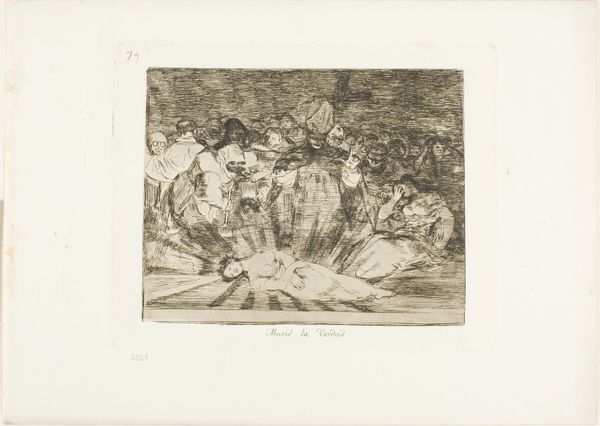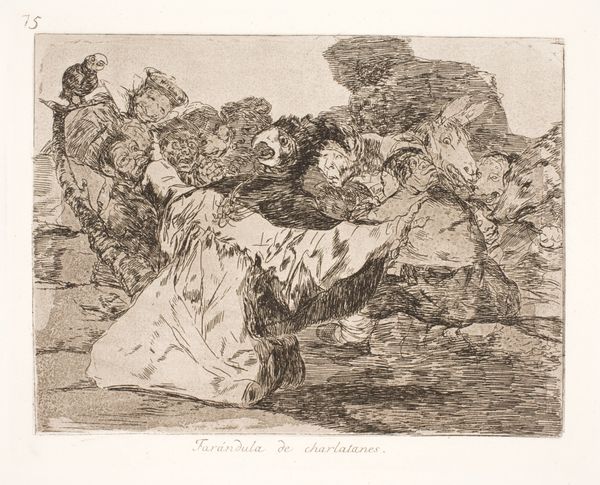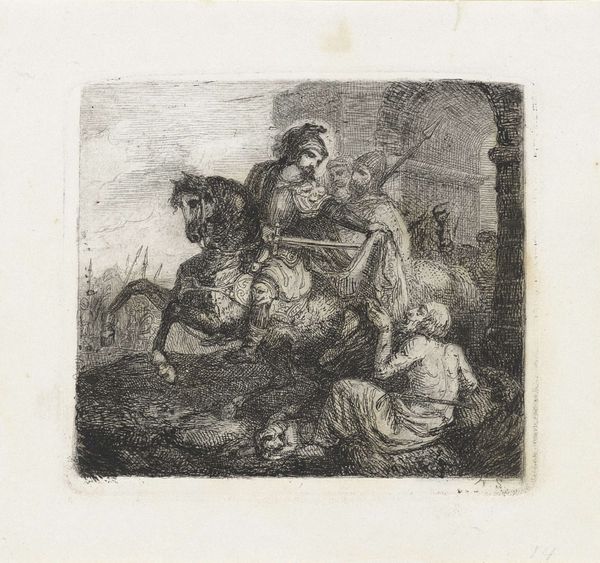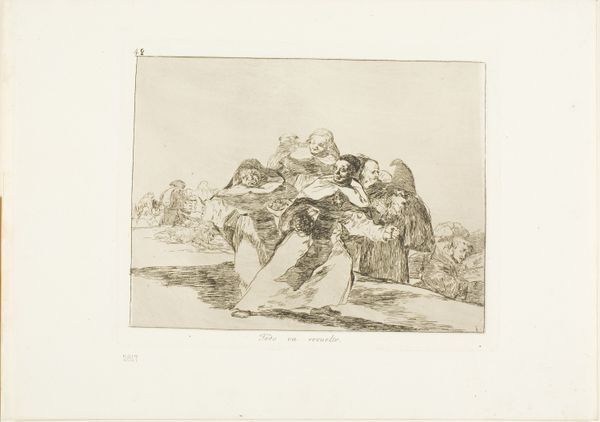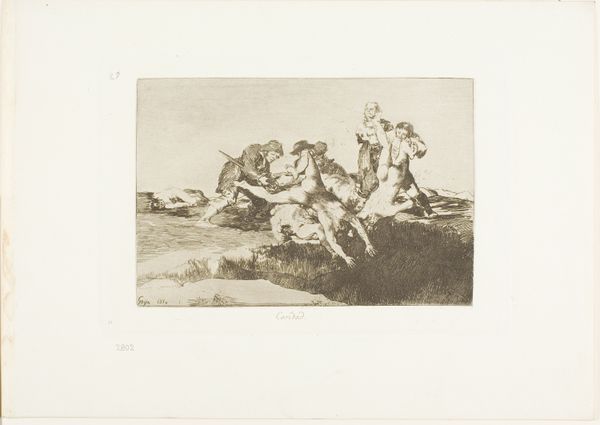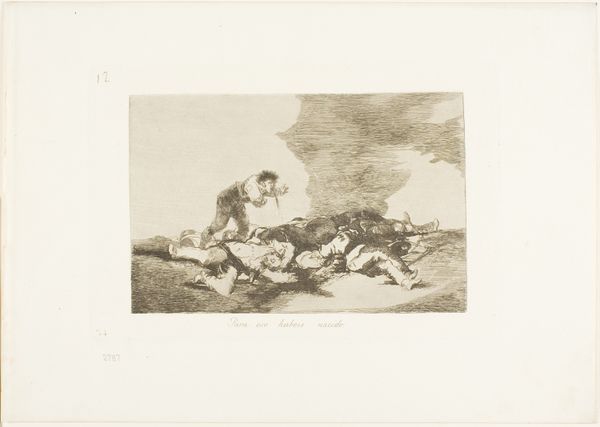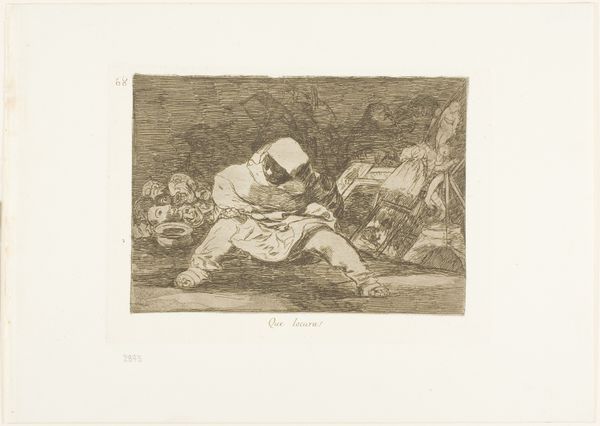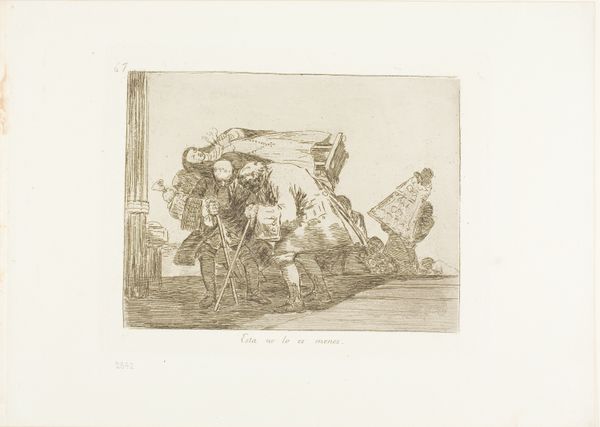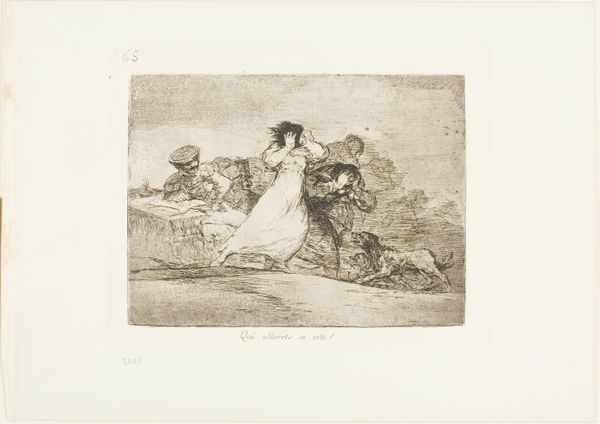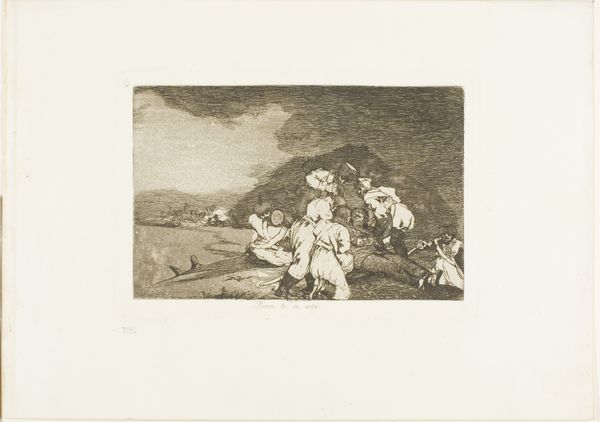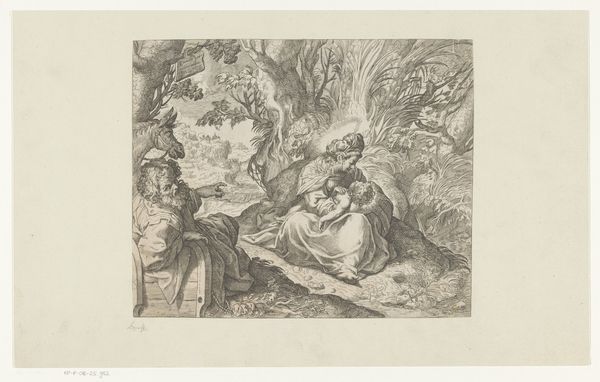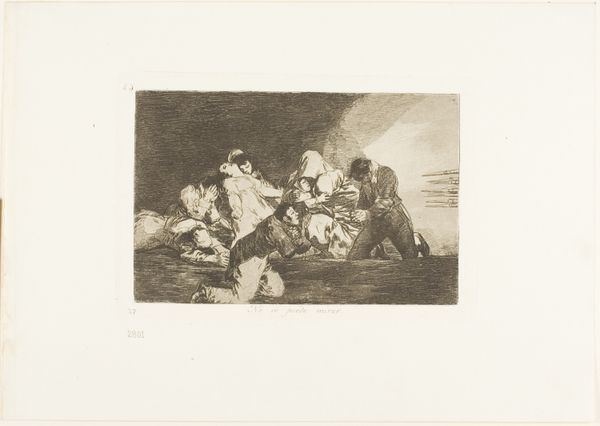
Charlatan's show, plate 75 from The Disasters of War Possibly 1815 - 1863
0:00
0:00
drawing, print, etching, paper
#
drawing
#
narrative-art
# print
#
etching
#
figuration
#
paper
#
romanticism
#
history-painting
Dimensions: 148 × 196 mm (image); 170 × 220 mm (plate); 240 × 337 mm (sheet)
Copyright: Public Domain
Curator: It has this immediate feeling of theatrical chaos, right? Editor: Absolutely. And this energy comes through so vividly even in a small print. We are looking at "Charlatan's Show, plate 75 from The Disasters of War," created by Francisco de Goya. Most likely between 1815 and 1863, this work, an etching on paper, captures something quite potent, displayed now at The Art Institute of Chicago. Curator: "Charlatan's Show"... such a loaded title. We see this central figure gesturing grandly, almost as if conducting a macabre orchestra of human suffering. To me, the upraised hand is symbolic, representing authority and control. What’s so resonant, in this composition, are all these distorted faces of witnesses. Editor: Yes, they are grotesque caricatures. Given Goya’s context, deeply impacted by war and political turmoil, isn't it possible that this is not just a "show," but a critique of the powers exploiting the populace? The grotesque figures could symbolize how conflict deforms humanity, strips away our essential dignity. Curator: I can see that. Goya had a flair for allegorical representations—donkeys and monstrous forms representing human failings, I always read that way, in this imagery. Editor: Consider how Goya might have felt about political authority at the time, which sought to manipulate the truth—turning horrific suffering into propaganda. I feel that this piece highlights the social amnesia following war; perhaps pointing out how easily society forgets atrocities to enable future power grabs. Curator: This almost looks like the Christian symbolism, like the Dance of Death, but turned into a satire of secular power. Instead of skeletons, Goya gives us something maybe even more chilling— humans reduced to puppets by forces beyond their control. It makes you question what is really guiding actions: morality or pure political opportunism. Editor: Goya offers a space where, maybe, reflecting on these dark parts of our shared history might allow for social awareness that challenges corrupt systems, like propaganda and other manipulative techniques to try to justify exploitation. Curator: Well, seeing all the symbol-infused chaos really does expose such unsettling insights. Editor: For sure, it serves as a timeless message for navigating the politics that often obscure the truth.
Comments
No comments
Be the first to comment and join the conversation on the ultimate creative platform.
